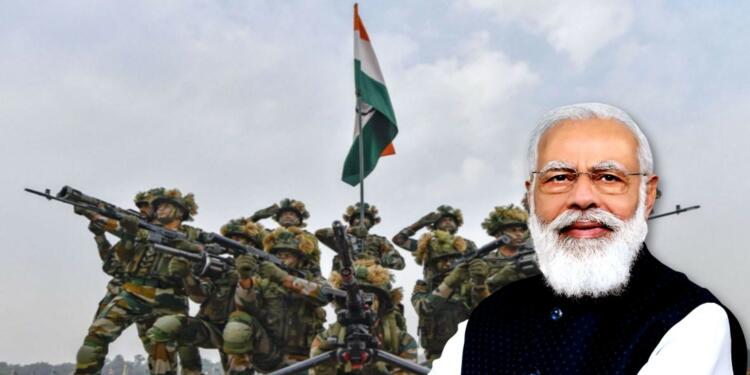In another step to smoothen the procurement for armed forces, the Modi government has allowed defence forces to acquire critical equipment under emergency acquisition powers. Under this, Indian forces can acquire any new or in-service equipment on a fast-track basis without the Ministry of Defence’s approval.
In the last few years, the government has implemented many reforms in order to modernize, rationalize, and augment the capabilities of the armed forces. The appointment of the Chief of Defence Staff (CDS) was one of the biggest reforms by the government that was pending for more than 2 decades.
The CDS Dilemma
The biggest hindrance in uniting the power of all the three Armed forces in one military officer was believed to be dangerous for the democracy. It is seen that wherever there is all the military power contained in one military officer, there are high chances of a military coup in that country.
But the development of hybrid warfare and the mature functioning of our democracy provided a conducive ground for the creation of the post of CDS. With effective checks and balances in the decision-making power, it was ensured that the three defence forces stimulate their functionality according to the modern security threats.
The much-needed military reforms were operationalised in the form of tri-service integration and coordination, and the equipment acquisition process was shaped by the first CDS, General Bipin Rawat. He emphasised on ‘Aatmanirbhar Bharat’ (self-reliant India) and also suggested that the development of arms and ammunition should be done indigenously to really transform India into a global superpower. It cannot be done if one nation is dependent on others for its defence requirements.
Fifth Generation Warfare
He was of the view that fifth-generation wars will be asymmetric and fought across entire spectrums, including land, air, sea, cyber, information, and economy; which we can already see in the Ukraine-Russia crisis. General Rawat aligning with the modern warfare system set up five theatre commands to combine army, air force, and naval assets and create a joint combat unit. Once operationalised, these commands will replace the current 17 service-specific commands.
The operationalisation of theatre commands started during the border stand-off with China in eastern Ladakh in mid-2020. The Army and Air Force pressed into service their assets like the Akash missile system and Su-30 fighter aircraft during the long stand-off, and the Navy deployed gunboats and P8I maritime patrol aircraft for surveillance at Pangong Tso.
Previously, on 16th September, Prime Minister Modi inaugurated the new office complexes as a part of the Central Vista Project. More than 7,000 defence ministry officers and staff will be shifting into brand new offices at Africa Avenue and Kasturba Gandhi Marg, finally relieving them from the existing decades-old workplaces from the pre-Independence era.
Moreover, the armed personnel in all three forces of the country viz. army, navy and air force will now formally be appointed as additional secretaries and joint secretaries in the Ministry of Defence.
According to a report by The Print, the Appointments Committee of the Cabinet (ACC), headed by Prime Minister Narendra Modi, appointed Lt Gen. Anil Puri as the Additional Secretary in the Department of Military Affairs (DMA). Maj. Gen. K. Narayanan, Rear Admiral Kapil Mohan Dhir and Air Vice Marshal Hardeep Bains have been appointed as joint secretaries in the DMA.
The OFB problem
For delivery of state-of-art defence equipment, Central Government decided to corporatise Ordnance Factory Board (OFB). Headquartered in Kolkata, OFB is said to be among the oldest and most inefficient organizations in the world. A white elephant of the Nehruvian economy, it employs more than 80,000 people in 41 ordnance factories, 13 ordnance R&D centres, and nine ordnance institutes of learning.
Often called the “fourth arm of defence”, it is disliked by the rest of the three arms- Army, Navy, and Air Force- due to production of inefficient weapons and untimely delivery process. The Armed forces are often forced to procure some low-skilled arms and ammunition from Ordnance factories because it has no other buyer given inefficient and sub-standard products.
These reforms, implemented over the last 8 years, coupled with Agnipath Scheme, will not only modernize the armed forces but also prepare them for a two-front war which India could face anytime from its two hostile neighbours on the eastern and western borders.
Support TFI:
Support us to strengthen the ‘Right’ ideology of cultural nationalism by purchasing the best quality garments from TFI-STORE.COM































